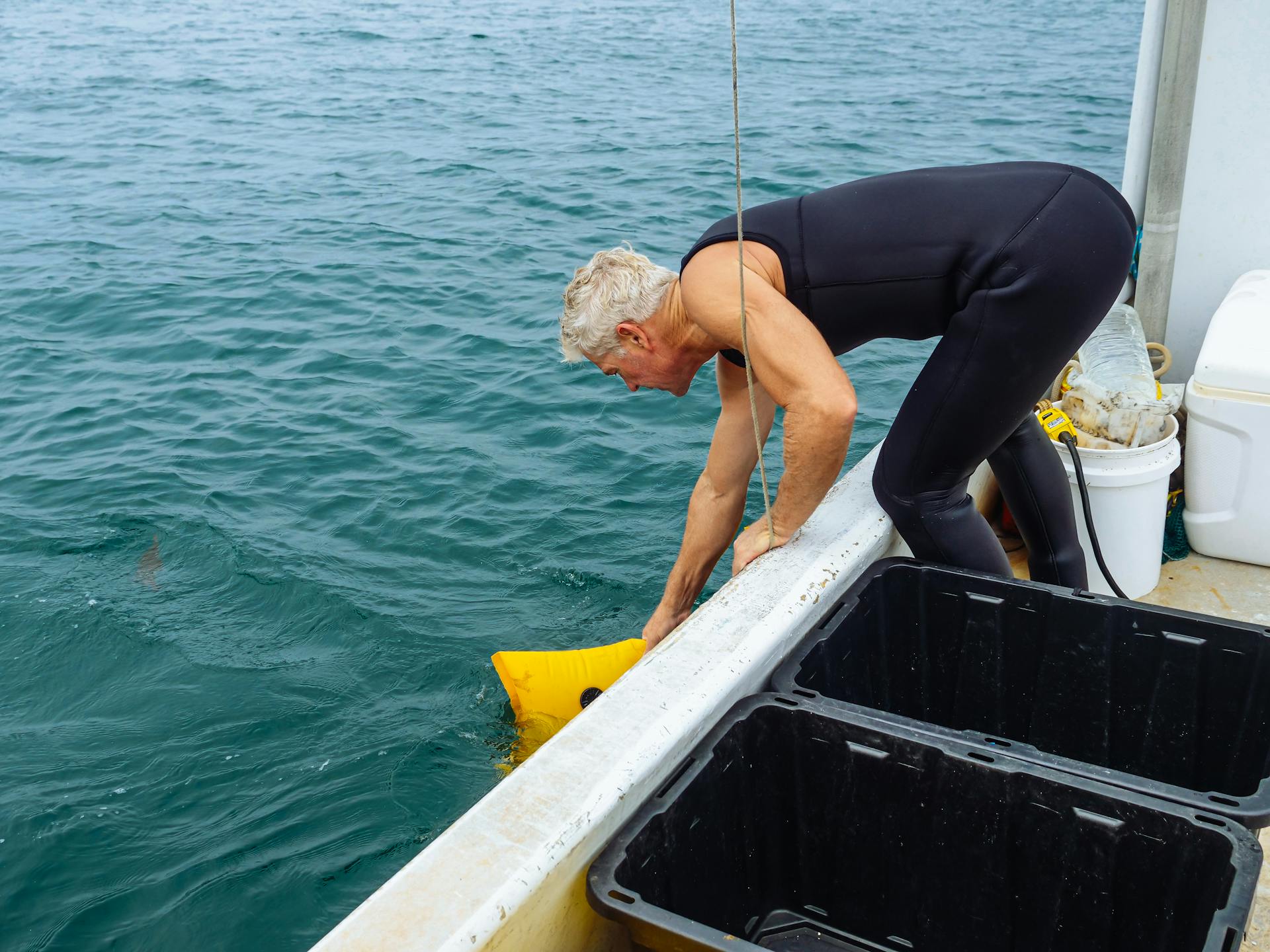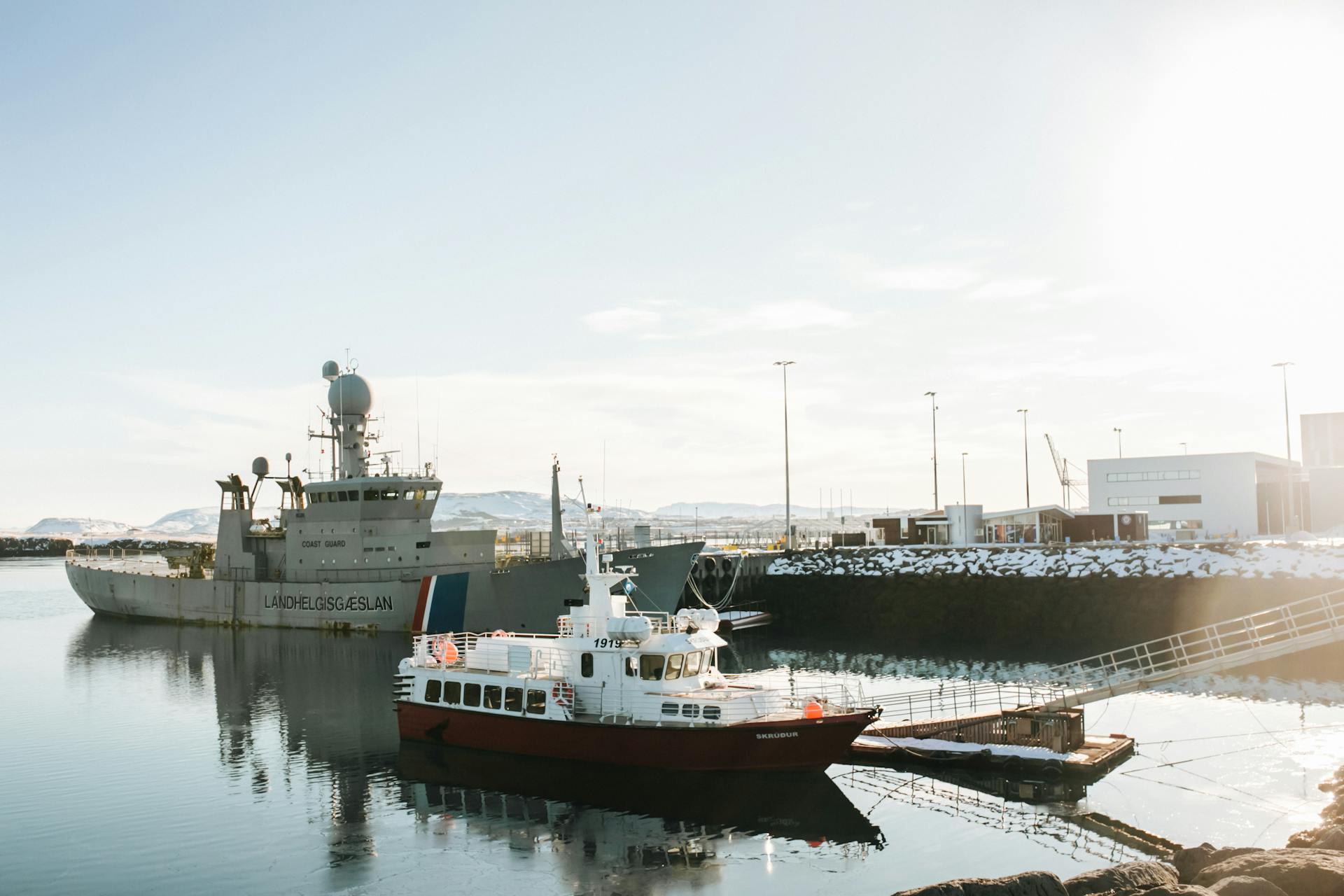
The MV Quinsam is a vital ferry service that connects Gabriola Island to the mainland. It operates out of the Departure Bay terminal in Nanaimo.
The ferry service runs regularly, making it easy for island residents and visitors to get where they need to go. The MV Quinsam has a capacity for 50 vehicles and 350 passengers.
Travelers can expect a scenic ride with stunning views of the surrounding waters and islands. The ferry ride typically takes around 35 minutes.
Worth a look: PacifiCat-class Ferry
MV Quinsam
The MV Quinsam is a ferry operated by BC Ferries, built in 1982 by Vancouver Shipyards in Vancouver, British Columbia. It was originally part of the Ministry of Transportation and Highways' fleet until 1985, when it was transferred to BC Ferries.
The Quinsam carries 70 cars and replaced the smaller MV Quinitsa on the Nanaimo to Gabriola Island route. The ferry has few passenger amenities on board, but it does have small passenger lounges with seating, washrooms, and vending machines.
The Quinsam underwent a $16 million mid-life upgrade in 2010, which included new engines and generators, a rebuilt pilothouse and passenger cabin, as well as steel replacement.
Intriguing read: Mv Coho Ferry
Future Gabriola Island Ferry
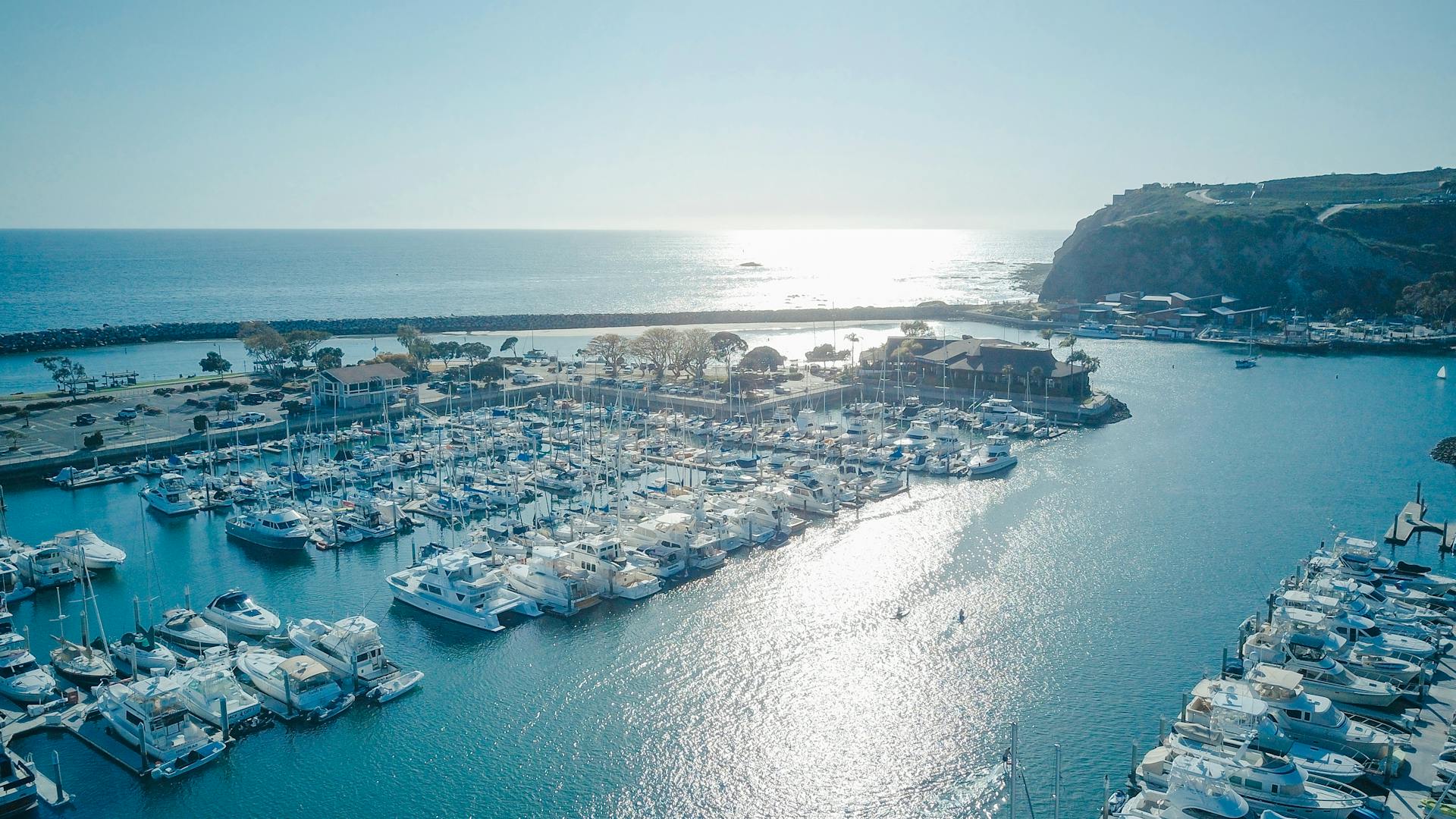
The new ferry bound for Gabriola Island is called Island 6, and it's currently on its way to local waters after leaving its Romanian shipyard on October 11.
It's expected to take around two months to make the cross-Atlantic journey, which is a long time to be at sea, but it'll be worth it in the end.
Island 6 will join one of its twins to replace the MV Quinsam on the Nanaimo Harbour to Gabriola Island route, which is a busy one.
The new ferry will be able to run in full electric mode once charging capabilities are installed on shore, making it a more efficient and environmentally friendly option.
The hybrid-electric vessel will be quieter and smoother than the traditional diesel propulsion of the Quinsam, and it will add more capacity and frequency of service to the route.
The Island class vessels can carry just under 50 vehicles, which is slightly less than the Quinsam, but running two vessels on the route in 2022 will effectively double capacity.

The new schedule implemented in September was an attempt to stem the delays that plagued the Quinsam, which was often late and had to cancel round trips.
The Gabriola Island Ferry Advisory Committee has been working to address the issues with the Quinsam, and it's clear that a more complicated solution is needed to fix the problems.
Early Morning Mystery
The MV Quinsam had a harrowing early morning experience. A vehicle sped through the gate at the Descanso Bay terminal.
At 3:45 a.m. PT, the vehicle launched off the loading ramp and landed on the deck of the MV Quinsam, which was tied up in dock.
The car sped along the length of the ferry and flew off the end of the boat deck. It then plunged into the water and sank.
BC Ferries cancelled all sailings between Gabriola Island and nearby Nanaimo Harbour until further notice.
Background and Context
The MV Quinsam is a vessel with a rich history. It was built in 1975.
The Quinsam was designed to operate in the coastal waters of British Columbia, Canada. Its primary purpose was to serve as a passenger and vehicle ferry.
The Quinsam has a length of 64 meters and a beam of 13 meters.
Ship Details
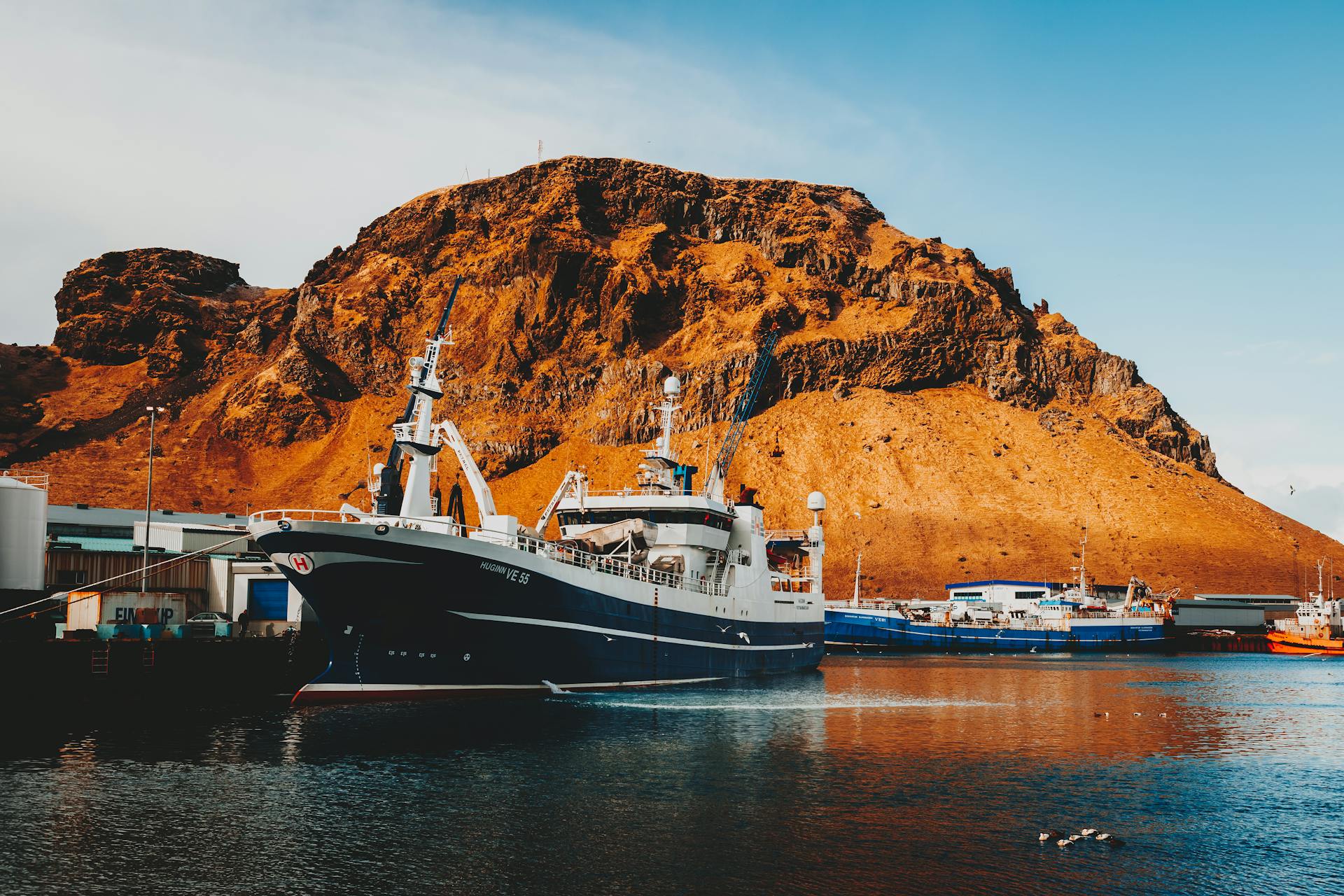
The ship was the SS Central America, a side-wheel steamship that was built in 1852 and was known for its luxurious accommodations and impressive size.
It was 280 feet long and 35 feet wide, making it a significant vessel for its time.
The ship was designed for speed and comfort, with a top speed of 15 knots and a capacity for over 800 passengers and crew.
It was equipped with a powerful steam engine and a pair of large paddle wheels, which provided a smooth and efficient ride.
The ship's cargo capacity was impressive, with a total of 1,400 tons of cargo space available for goods and supplies.
The SS Central America made several notable voyages during its lifetime, including a famous trip to California during the Gold Rush era.
Curious to learn more? Check out: Russian Landing Ship Admiral Nevelskoy
History
The concept of background and context has been around for centuries, dating back to the ancient Greeks who believed in the importance of understanding the circumstances surrounding an event or decision.
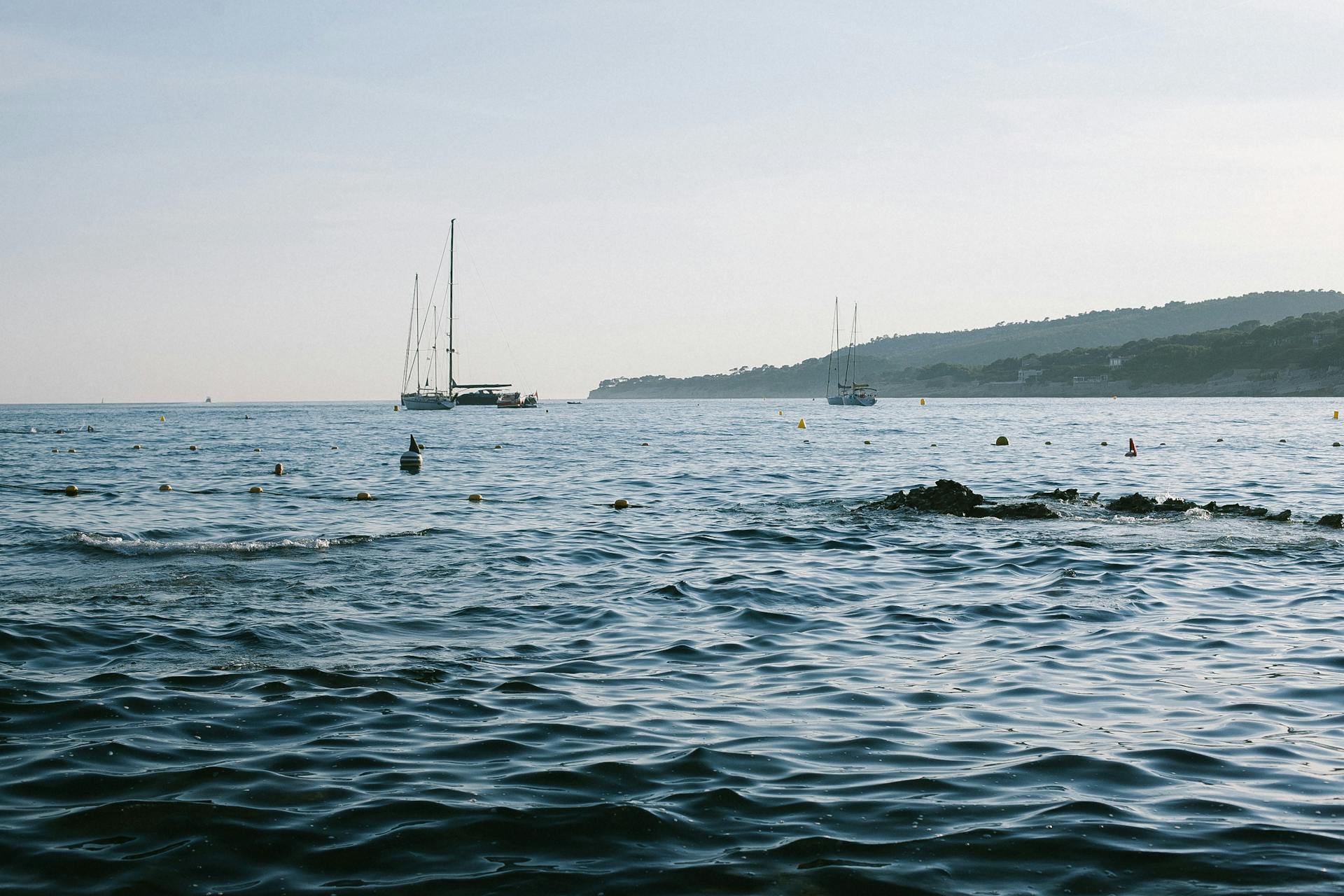
In the 19th century, the term "background" started to be used more widely in literature and art, referring to the setting or environment that provides context to a story or scene.
The idea of context-dependent meaning has been studied extensively in linguistics, where researchers have found that the same word or phrase can have different meanings depending on the surrounding words and circumstances.
Context is key in communication, as it helps to clarify the intended meaning and avoid misunderstandings.
The ancient Greeks believed that understanding the background and context of a situation was essential for making informed decisions and judgments.
In literature, authors often use background information to provide context and depth to their characters and stories.
Context-dependent meaning is a fundamental concept in linguistics, with implications for how we understand and interpret language.
Romanian Origin
The Romanian language is a Romance language, meaning it evolved from Latin, the language spoken in the Roman Empire.
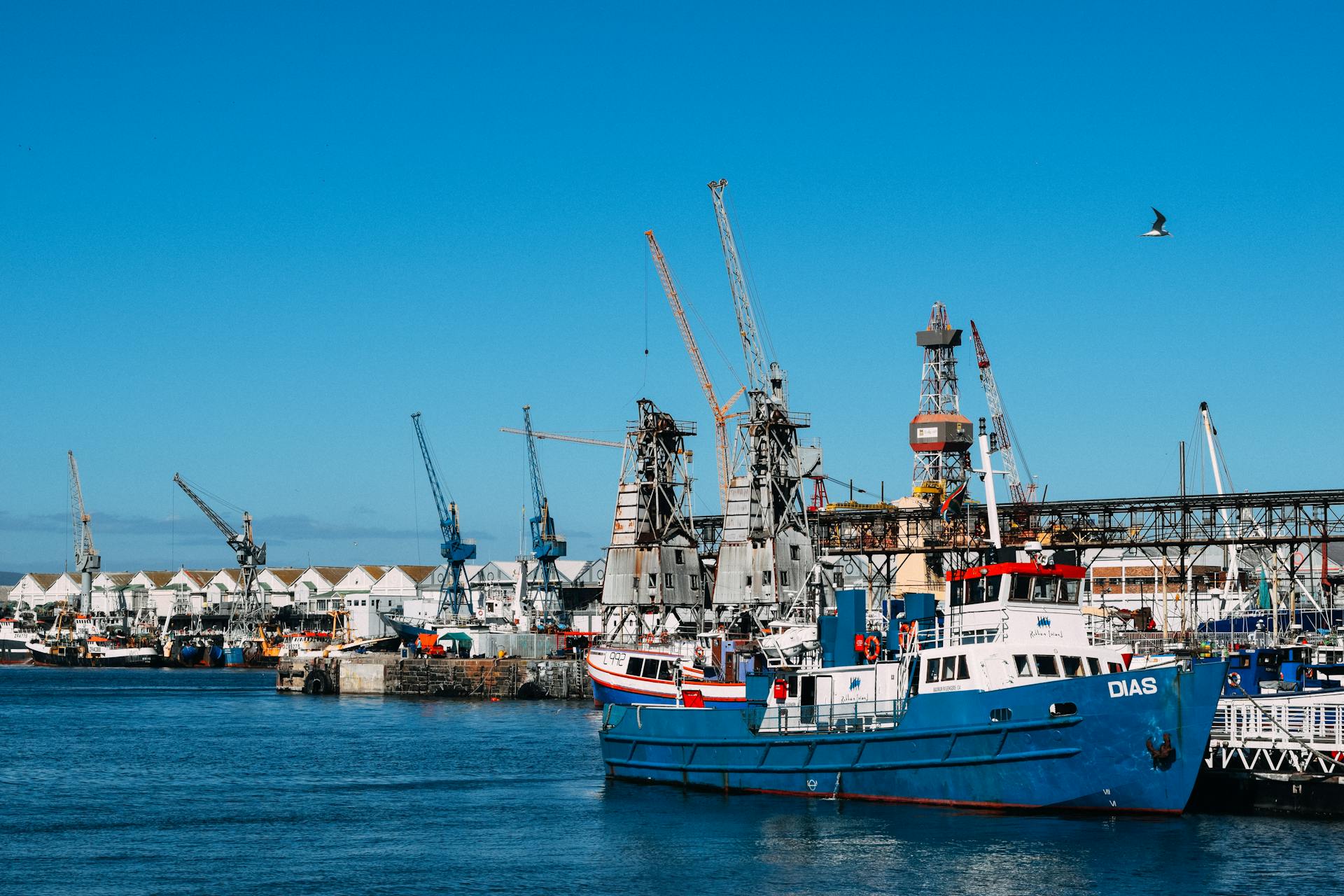
The Roman Empire conquered the region that is now Romania in the 1st century AD, leaving a lasting legacy in the language and culture.
Romania's strategic location at the crossroads of Europe and Asia made it a melting pot of cultures and influences.
The country's name "Romania" is derived from the Latin word "Romanus", meaning Roman.
Sources
- https://en.wikipedia.org/wiki/MV_Quinsam
- https://www.bcferries.com/on-the-ferry/our-fleet/quinsam/QSAM
- https://www.pqbnews.com/news/hybrid-ferry-for-gabriola-nanaimo-route-launches-in-shipyard-in-europe-1188249
- https://nanaimonewsnow.com/2021/10/13/future-gabriola-island-ferry-b-c-bound-from-romanian-shipyard/
- https://www.cbc.ca/news/canada/british-columbia/vehicle-speeds-off-b-c-ferry-and-sinks-at-gabriola-island-1.1346695
Featured Images: pexels.com


